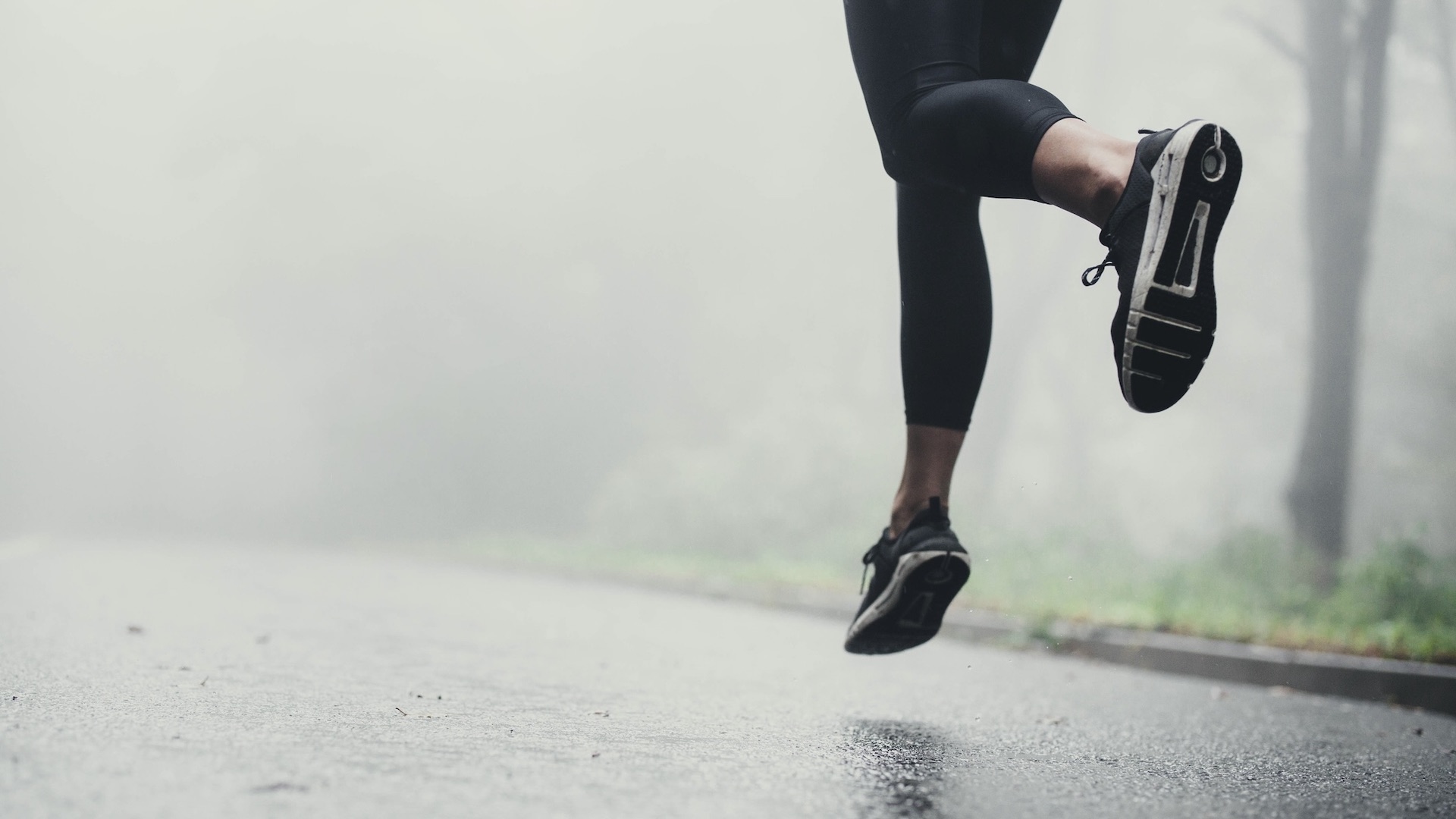What to wear running in the spring: master the art of smart layering
The best clothing and footwear for comfort in changeable conditions

Fresh greenery, birdsong and the first tree blossoms make springtime runs a pleasure, but getting your clothing right can be tricky. Conditions can change from one moment to the next, with sunshine, showers, and chilly winds all on the menu, so how can you make the right choices before you set off?
First, take a look at the weather forecast for your route. They will never be 100% right, they do offer a good guide to what's coming up later in the day. Even if it’s sunny in the morning, in springtime the weather can change quickly to rain and wind but then return to sunshine later on.
Packing a lightweight running jacket or windbreaker in your running backpack could be a smart move if temperatures are expected to drop, or you may choose to take a running hat and running sunglasses if sunshine is on the menu later.

Start warm, peel off
You’ll often feel a chill in the air in spring, especially if you plan to run in the morning or evening. So, it makes sense to start warm by adding extra layers – and then peel them off as the air or your body temperature rises.
Useful spring running clothing items include long-sleeved base layers over a short sleeved base layer, a running gilet, a windproof jacket and arm warmers or sleeves. Each of these will protect you from the cold and can then be taken off as you warm up.
It’s helpful to use a backpack to stow your extra layers, or you could stuff a gilet or arm warmers in a pocket when not in use.

Don't just follow the crowd
It can be too easy to follow what other runners are doing, especially if they look to wearing and carrying less kit than you. But we are all different and, at the very least, you could end up having a cold and unenjoyable run if you follow what a friend is wearing.
Advnture Newsletter
All the latest inspiration, tips and guides to help you plan your next Advnture!
Make sure you wear the right running clothing and carry spares according to your experience of how cold or hot you get.
It's essential, too, that you feel confident that you have checked the weather forecast rather than relying in what someone else is telling you. While you might "get away" with a short local run in unpredictable wet or cold weather, if you are embarking on a longer run and on more remote trails it is better to be safe than sorry so a kit list of essential items, such as what to wear when running in the rain, is important.
Accessories for spring running
If it’s cold at the start of a run, or you are planning to be out for many hours and the forecast is for mixed weather, it’s a good idea to take running gloves, a hat or neck gaiter, and lightweight waterproof jacket.
These items are especially important if you running on trails and in the hills. More exposed or higher altitude locations can bring cooler temperatures and the potential for inclement conditions.
A useful tip is to take waterproof over-mittens which provide a protective layer for lightweight summer-style gloves but do not weigh very much. This gives you the option of running with bare hands, lightweight gloves and also an added layer of protection should the weather change.
Likewise a running beanie might be enough for most of your spring run but if the conditions change you could add a buff for further protection or wear a running jacket with a hood. Sometimes you only need a small amount of extra coverage to make a big difference.
A running cap is another great item for spring running because the peak will keep both the sun and the rain off your face, depending on the weather.

What about your legs?
It can be difficult to choose the right legwear for spring running. At the start of the run, your leg muscles will welcome a bit of coverage with running tights. However, after a while, once you have warmed up, you might find tights a bit too hot.
A compromise is three-quarter length running tights or capris. Double layered shorts or a skort are a good choice too. You will have the benefit of two layers for warmth but also the cooling aspect of bare lower legs.
If you're running in more remote places, a pair of waterproof or windproof over trousers could be very useful if the wind picks up our it starts to rain. You can buy lightweight running over trousers that can be stuffed into a backpack.
Spring running footwear
Again, what you choose to wear on your feet will depend on the overall forecast. Different running shoes will also suit different conditions.
If you're heading out on trails after rain, you might want to consider running footwear that includes a Gore-Tex membrane for waterproofing. Adding running shoe gaiters will also help to keep out the wet of running through puddles and mud. If it's likely to be slippery underfoot, you might also want to consider mud running shoes for extra traction.
If the forecast is for warmer weather, running shoes that offer good breathability will be important. Sweaty feet can lead to blisters and discomfort due to warmth.
Don’t forget your socks
There are a couple of good options for spring running. Running socks that are made with natural products, such as merino wool, or have a mix of natural and synthetic fibres, will be ideal for conditions that are changeable.
Natural products are great at keeping feet warm and also allowing sweat to wick through from the skin.
If the day’s forecast is for a mix of sun and rain – this is typical UK spring weather – you could consider waterproof running socks. Choose lighter weight running waterproof socks to keep dry if it’s wet underfoot but also to allow for good breathability.
A good tip is to wear waterproof socks and then take a spare pair of socks with you so you can change into lighter and more breathable socks depending on how the run goes.
Be bold, start cold?
There is a theory that it’s better to start slightly colder when running because you will quickly warm up. This is fine if you carry spare clothes with you.
In spring, you can often look out of the window and see sunshine, which makes you think of warmth. But temperatures may still be low and so you could end up starting cold and not really warming up at all.
For example, a t-shirt and a gilet might seem like the ideal combination for a spring run but bare arms and hands will end up taking the brunt of the cold. If you also have bare legs, you could easily end up too chilled to enjoy the run.
It’s far better to start warmer and have the ability to shed layers as you warm up, then add layers back on if conditions change or you slow down.
Stay warm and safe
Because springtime can be a season of unpredictable weather, it’s important to be prepared for whatever is thrown at you. Trail runners or ultra runners should make sure that carry spare garments, especially waterproof jackets and over trousers, as well as a lightweight insulated jacket, gloves and an emergency blanket or bivy sack.
Running sunglasses and sunscreen are useful extras, too, for protection against the sun's harmful rays.

Fiona Russell is a widely published adventure journalist and blogger, better known as Fiona Outdoors. She is based in Scotland and is an all-round outdoors enthusiast with favorite activities including trail running, mountain walking, mountain biking, road cycling, triathlon and skiing (both downhill and backcountry). Aside from her own adventures, Fiona's biggest aim is to inspire others to enjoy getting outside and exploring, especially through her writing. She is also rarely seen without a running skort! Find out more at Fiona Outdoors.
